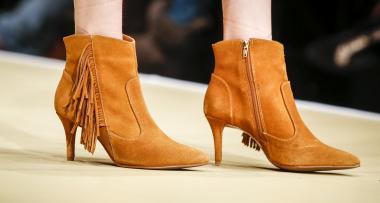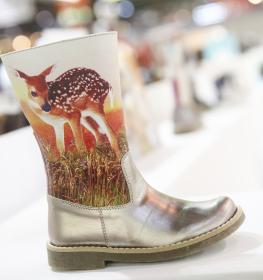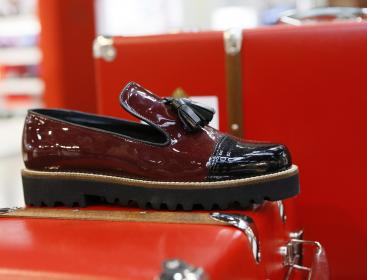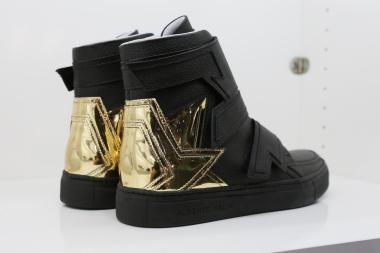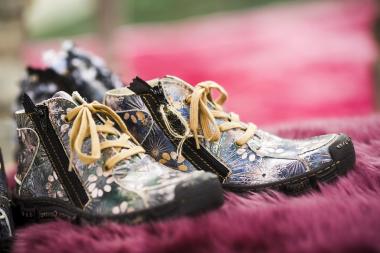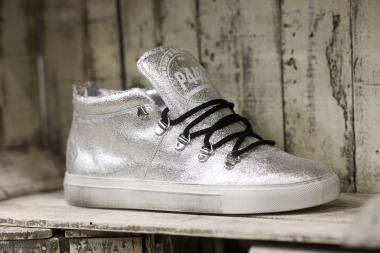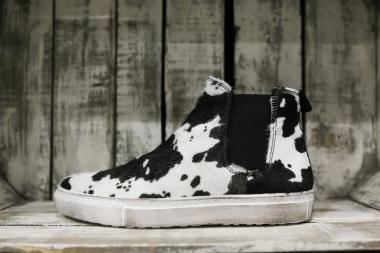IMPORT BAN OF USED CLOTHING TO PROMOTE EAST AFRICAN TEXTILE INDUSTRY
Observers doubt the Success of the planned Measures / Ambitions in the Automotive Industry
Nairobi (gtai) - The countries of the East African Community will prohibit the import of used clothing and used shoes in three years. Long since defunct textile and clothing industries so revived. It is also planned to impede the import of used cars, in order to promote a local car assemblers. In particular, the Ugandan President Yoweri Museveni dreams of building its own car industry.
The East African Community (EAC), who is also Kenya, Tanzania, Rwanda and Burundi belong alongside Uganda, other countries serve as role models. So to have led to building lively textile industries in Ghana, Egypt, Ethiopia, India and Vietnam, such a ban.
Used clothing is very popular East Africa. With luck, you can get hold of well-preserved Western European branded goods or shoe sizes, as they are locally not available for little money. Many teenagers from expensive villas suburbs of capitals makes a kick out, used T-shirts to buy exotic printing at prices equivalent to 0.45 euros. Thanks to the second-hand imports contribute even male slum dwellers naturally a western suit and girls or young women from a wide array chic western clothes.
| Customer Country | 2014 | 2015 *) |
| Kenya | 8.61 | 7.74 |
| Uganda | 4.92 | 4.48 |
| Tanzania | 1.87 | 4.81 |
| Rwanda | 0.12 | 0.14 |
| Burundi | 0.31 | 0.02 |
| Total | 15.83 | 17.19 |
| German Exports worldwide | 390.64 | 388.55 |
1) Primarily apparently used clothing, blankets and kitchen linen of textile materials and shoes that are loose presented in bulk or bales. 2) provisionally
Source: Destatis
Politicians promise hundreds of thousands of new jobs
While East African politicians boast of being able to create in this way hundreds of thousands of jobs, incite economists from: "The reasons why people in East Africa are happy to buy used clothes easily enumerated," said Scolastica Odhiambo, an economics professor at the Kenyan Maseno University: "It is less expensive, of good quality and provides diversity." The regional textile industry have meanwhile not have the capacity to meet the demand. In addition, they do not produce quality in the eyes of the local population. The only local manufacturer of shoes, meanwhile, the company Bata that however mainly produces shoes for students and a local SME. In the upper price segment Bata, however, is dependent on imports.
In a period of three years, it is the opinion of observers simply impossible to expand the local textile industry so that it can meet the demand both quantitatively and qualitatively. This time is also too short to find alternative employment for hundreds of thousands of second-hand clothes dealer who live with their families from the Mitumba business (Mitumba = bales).
Industrial decline since the 1980s
If the East African states really want to try willing to build a powerful textile industry, they would almost from scratch start. The East African cotton production was mid- 1980 even at the height. Tanzania had then 700,000 bales (à 185 kg) produces cotton, reports the weekly "The East African", Uganda and Kenya 400,000 100,000. Then it was just gone downhill. Kenya had last only 25,000 bales (2014), Uganda 150,000 bales (2015) and Tanzania produced 30,000 bales (2014).
East African textile factories and Entkörnungswerke for cotton (ginneries) have shut down or run down for the most part. The main reasons included industry experts, a lack of organization of the agricultural sector, high production costs, the inadequate use of quality inputs and over-reliance on a rain irrigation. Then in 1991 came yet added the liberalization of the sector: Cheap Used clothes conquered henceforth
the market.
Uniforms instead of fashion chic?
How difficult is the situation, be seen using the example of single Rwandan textile factory L'Usine Textile du Rwanda (UTEXRWA). 1984 began its operation,the 75-million-US $ - Investment. But for an average Rwandans were and are the products simply too expensive. Finally, the utilization was only at 20%, sales fell to an estimated $ 2 million to 3 million US. Almost all substances are already imported: cotton
fabrics from the East African neighbors, polyester materials from South Africa, Taiwan, Korea and Indonesia (Rep.).
To prevent the utter collapse of the company, the Rwandan government will soon raise the import tariffs on clothing gradually from 35% to 100%. Rwandan clothing retailers see the highly critical: UTEXRWA could neither quantity nor quality and certainly not fashionable Chic deliver, not now and not in ten years. Over military and school uniforms are not there, they say.
Prohibitions instead of better frame conditions
Foreign observers speak of a typical East African policy Quick shot: Because the governments want to defuse the ticking time bomb of rapidly rising unemployment, they sat on activism without the consequences to sufficiently discuss. If East Africa wants to strengthen its industry, it must improve the framework. Bureaucracy, corruption, nepotism and monopolies are the ones that prevent the development of competitive industries for decades.
The winner of the new policy is expected to - be the PRC, which is expected to fill along with other low-cost producers, the expected supply vacuum - again. Clothing stores in the Ethiopian capital Addis Ababa to show where we are headed: The cheapest Chinese commodity, wherever you look. The new Ethiopian textile and footwear industry is meanwhile mainly from Chinese companies which produce exclusively for export. to copy this model to other East African countries, however, is likely to fail, say industry insiders. Kenya and Tanzania are far too expensive, not to mention the landlocked countries of Uganda, Burundi and Rwanda throughout.
| Abnehmerland | 2013 | 2014 | 2015 *) |
| Mauritius | 5.44 | 3.39 | 4.17 |
| Uganda | 0.60 | 0.56 | 1.67 |
| Ethiopia | 0.48 | 6.68 | 1.14 |
| Kenya | 0.93 | 1.72 | 0.91 |
| Tanzania | 0.61 | 0.47 | 0.56 |
| Madagascar | 0.02 | 0.05 | 0.04 |
| Total | 8.08 | 12.87 | 8.49 |
*) provisional; Quelle: Destatis
Protectionism to promote motor vehicle industry
Even more questionable than the East African textile policy is rekindled desire to raise its own automotive industry launched. Hopefuls nationalist politicians in Kenya is the "Mobius", an all-terrain vehicle primitive, which is equipped with a small engine from the Nissan NP200 pick-up truck. Students of Uganda Makerere University have meanwhile introduced with the help of the US Massachusetts Institute of
Technology two concept studies, the "Kiira EV Smak Car" and "Kayoola Solar Bus". While the Kenyan "development" is reminiscent of the technical status of the 2nd World War, set the Ugandan vehicles
conscious on renewable energy.
Although these backyard experiments also not likely to have the lowest commercial opportunities, they nevertheless serve currently as an excuse for protectionist import barriers, which resulted in imports are likely to be more difficult in favor of a local assembly of CKD kits.
Martin Böll, Germany Trade & Invest www.gtai.de



